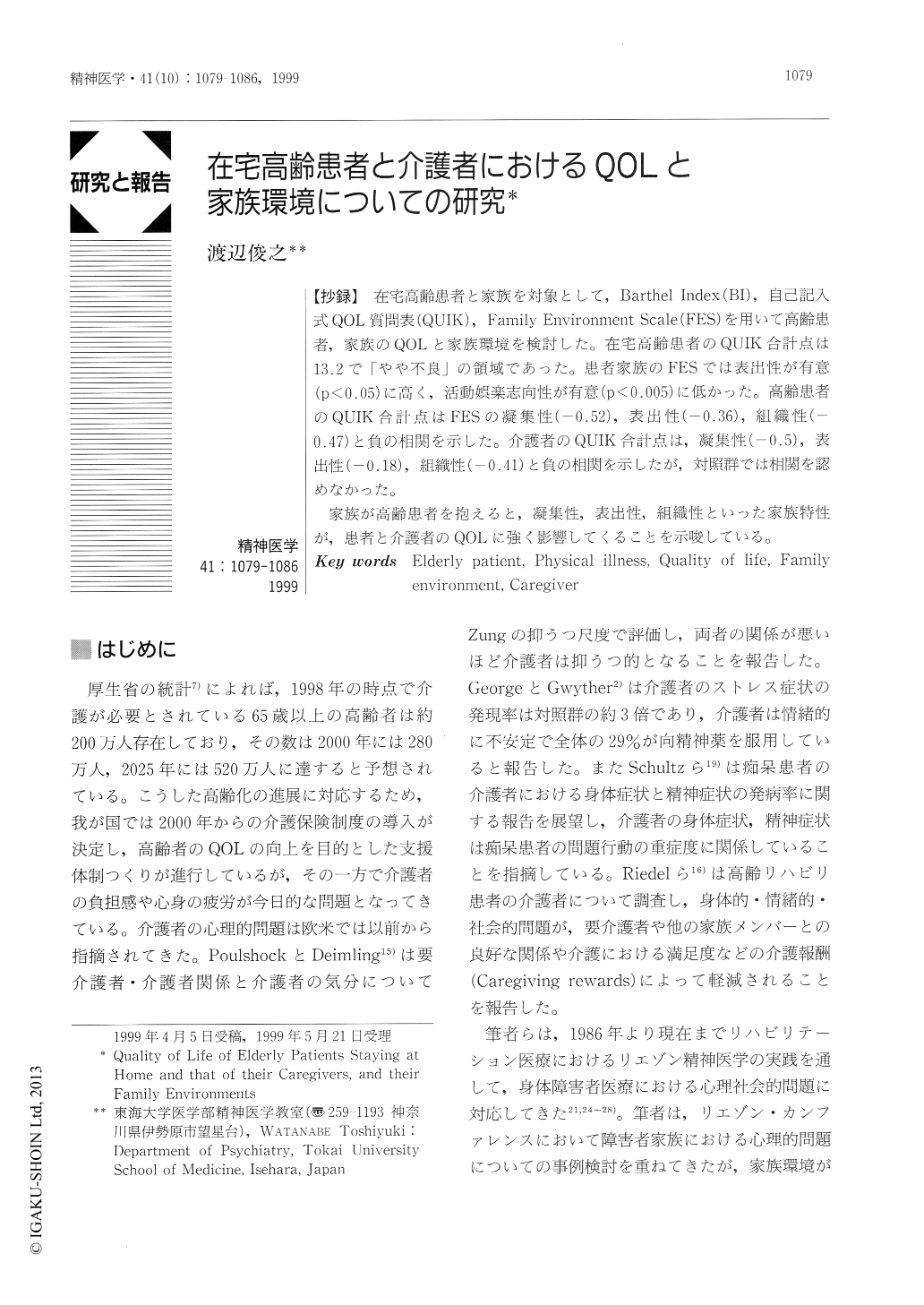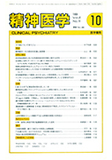Japanese
English
- 有料閲覧
- Abstract 文献概要
- 1ページ目 Look Inside
【抄録】 在宅高齢患者と家族を対象として,Barthel Index(BI),自己記入式QOL質問表(QUIK),Family Environment Scale(FES)を用いて高齢患者,家族のQOLと家族環境を検討した。在宅高齢患者のQUIK合計点は13.2で「やや不良」の領域であった。患者家族のFESでは表出性が有意(p<0.05)に高く,活動娯楽志向性が有意(p<0.005)に低かった。高齢患者のQUIK合計点はFESの凝集性(-0.52),表出性(-0.36),組織性(-0.47)と負の相関を示した。介護者のQUIK合計点は,凝集性(-0.5),表出性(-0.18),組織性(-0.41)と負の相関を示したが,対照群では相関を認めなかった。
家族が高齢患者を抱えると,凝集性,表出性,組織性といった家族特性が,患者と介護者のQOLに強く影響してくることを示唆している。
This study investigated the quality of life (QOL) of elderly (>65 years of age) medical patients staying at home and that of their caregivers, and their family environments.
The cases were rehabilitation patients going to clinic regularly, their caregivers, and their families (N=229, 84 families). The controls were healthy elderly individuals, other members and their families (N=253, 89 families). The Barthel Indexes (BI), Questionnaire for QOL by lida and Kohashi (QUIK), and Family Environment Scale (FES) were used for this study. The mean QUIK score for elderly patients staying at home was 13.2 (slightly poor). The mean expressiveness score on the FES was significantly higher in the patients than in the controls (p<0.005). The mean active-recreation orientation score on the FES was significantly lower in the patients than in the controls (p<0.005). The QUIK scores for elderly patients staying at home were associated with cohesion (r=-0.52), expressiveness (r=-0.36), and organization (r-0.47). The QUIK scores for caregivers were associated with cohesion (r=-0.5), expressiveness (r=-0.18), and organization (r=-0.41), however, no correlation was seen between QOL of other members and family environment in the control group.

Copyright © 1999, Igaku-Shoin Ltd. All rights reserved.


